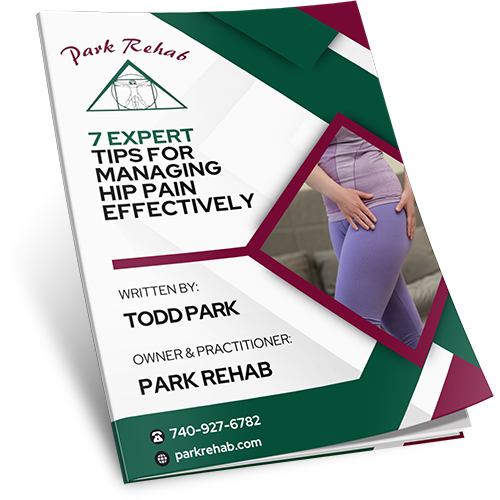Hip Pain
We understand that hip pain is often linked with other conditions like back pain, so we thoroughly assess how the hip and lower back move together.
What Is Hip Pain?
Hip pain is a common complaint that many people experience, often caused by conditions like hip bursitis or osteoarthritis. These conditions can be particularly troublesome as they limit mobility and make daily activities painful. Hip bursitis occurs when the fluid-filled sacs (bursae) that cushion the hip joint become inflamed, leading to discomfort. Osteoarthritis of the hip is a degenerative condition where the cartilage in the joint breaks down, causing pain and stiffness. While these conditions are common, the treatments people often try, such as pain medications, heat therapy, or online exercises, can sometimes offer limited relief. That’s why it’s crucial to seek a targeted, professional approach to treatment.
What are the symptoms of Hip Pain?
The symptoms of hip pain can vary depending on the underlying cause but commonly include:
- Pain in the hip joint: This pain may be felt in the front, side, or even deep within the hip, especially when walking, sitting, or performing other activities.
- Stiffness: Many people experience stiffness in the hip, which can make it difficult to perform everyday tasks, such as getting in and out of chairs or walking for extended periods.
- Limited mobility: Those suffering from hip pain may find it hard to bend or squat, and performing activities like gardening, playing with grandchildren, or even walking to the car can become increasingly challenging.
- Pain radiating to the lower back: Hip pain often correlates with back pain. When the hip is restricted and unable to move freely, it places extra stress on the lower back, leading to discomfort in that area as well.
These symptoms can be debilitating, affecting mobility and overall quality of life. Left untreated, hip pain may worsen over time, leading to additional problems in the back or other joints.
What Is Our Approach To Treating Hip Pain?
At Park Rehab, we take a comprehensive approach to treating hip pain, focusing on restoring proper movement and function to the hip joint. We understand that hip pain is often linked with other conditions like back pain, so we thoroughly assess how the hip and lower back move together. Our goal is to not only alleviate pain but also to restore the full range of motion and strength to improve overall mobility.
- Movement Assessment: The first step in our treatment process is a detailed movement assessment. We spend an hour evaluating how the hip joint and lower back are functioning together. Understanding how the two areas move and interact helps us pinpoint the cause of your pain and develop a treatment plan that targets both the hip and the surrounding structures.
- Shockwave Therapy: We use shockwave therapy as part of our treatment process to stimulate healing in damaged tissues and reduce pain. This non-invasive therapy uses high-energy sound waves to encourage blood flow and accelerate tissue repair, providing relief from chronic pain.
- Joint Mobilization: We also use joint mobilization techniques to help restore movement in the hip joint. By manually manipulating the joint, we can reduce stiffness, improve flexibility, and reduce pain, helping you regain full range of motion.
- Cold Laser Therapy: This therapy uses low-level lasers to reduce inflammation and promote healing at the cellular level. Cold laser therapy is highly effective for reducing pain and improving tissue regeneration, especially in cases of arthritis or soft tissue damage.
- Myofascial Release and Redcord Neurac: We use myofascial release techniques and Redcord Neurac, which involves suspension exercises using ropes to activate the muscles around the hip and back. This helps restore movement, balance strength, and improve overall stability. These are advanced treatments that many clinics do not offer, and they’ve proven to be highly effective for people suffering from hip pain.
- Dry Needling with Electrical Stimulation: Dry needling is another method we use to relieve pain and restore function. By using acupuncture needles combined with electrical stimulation, we can target tight muscles and stimulate the healing process. This technique has shown significant success in treating hip pain and improving mobility.
Download Our free Report
If you’re struggling with hip pain that limits your ability to walk, squat, or perform daily activities, it’s time to take action. Our free hip pain report can help you regain your mobility. This comprehensive guide provides practical tips and strategies to reduce pain and improve your daily life. Learn about the common causes of hip discomfort, discover effective solutions to alleviate pain at home, and find out the next steps to take for long-term relief and improved movement.

